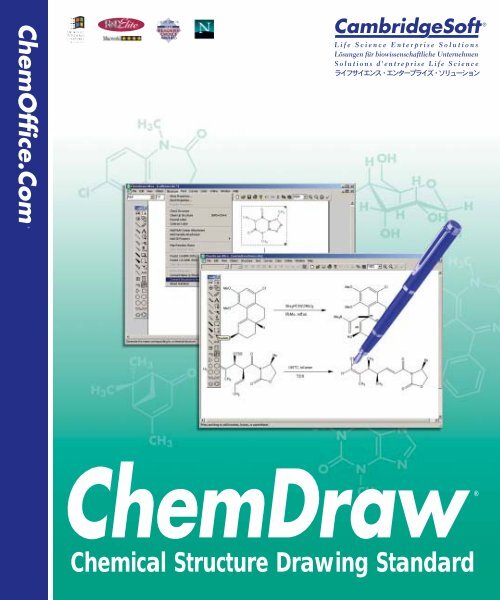

Support for Hierarchical Editing Language for Macromolecules (HELM) With the new hotkey enhancements, you will spend far less time on drawing your reactions and much more time focusing on your research! It is also now possible to switch between the different tools without relying on the time-consuming back and forth movements with the mouse. Hotkeys and reaction shortcut enhancements will improve your user experience with ChemDraw® by cutting down drastically the amount of time needed to draw complex molecules and reactions to a sequence of keystrokes. Document, track and search your experiments easily with PerkinElmer Signals Notebook Individual Edition. You can enjoy seamless workflows between both tools including browsing and working with any ChemDraw® file in PerkinElmer Signals Notebook Individual Edition by opening or simply copying/pasting. Quickly re-organize the order of your libraries, and access common libraries or share your own. If you are into HELM notation (for peptides, nucleic acids, ADCs etc.) you now have the possibility to connect to different libraries of monomers and manage and curate the content of those libraries. Shared Libraries of Monomers and Seamless Integration with PerkinElmer Signals Notebook Individual Edition Thanks to the new add-in architecture in ChemDraw®, you can now explore chemical properties or supplier information for a given molecule by looking up and retrieving information directly from, PerkinElmer’s database of over 10M commercially available compounds, and quickly paste structures back into the canvas. But that is not all! As part of this partnership, you can also choose to use ChemDraw® JS as a drawing editor when you use the online Reaxys website. It is now possible to draw a molecule or a reaction in ChemDraw® and initiate a structure search into Reaxys. It is now possible to define an Average Molecular Weight values for a chemical structure between brackets for easier stoichiometry calculations. H and P phrases from multiple regulatory agency sources can be conveniently copied to the clipboard.

When enumerating generic structures to create chemical libraries, the previously existing upper limit of 500 structures has been removed through the possibility to enumerate a generic structure directly to an SD File without an upper limit for the number of structures generated.ĬhemOffice+ users can now select a chemical structure or a chemical name in ChemDraw® and retrieve GHS information (pictograms, H and P phrases) coming from the PubChem Laboratory Chemical Safety Sheet (LCSS). ChemDraw® now offers the unique possibility to add color inside any carbon cycle, thus enabling clearer communication of ideas and concepts by directing the focus of a reader or an audience to a given part of a chemical structure.


 0 kommentar(er)
0 kommentar(er)
